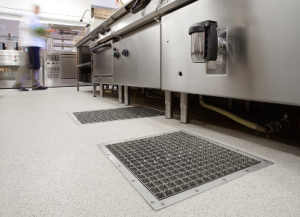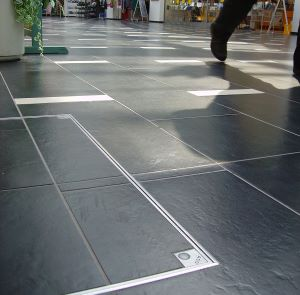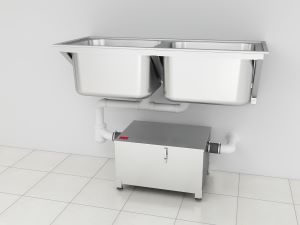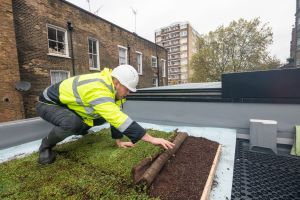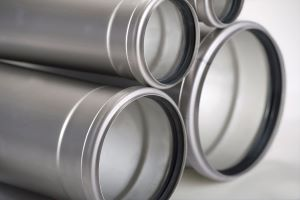ACO TECHNOLOGIES PLC - BUILDING DRAINAGE
Suppliers of: Internal and external drainage solutions, stainless steel floor drains, stainless steel gullies and channels, rainwater outlets, shower floor drains, bathroom and wet room floor drains, internal linear drainage channels, access covers, grease separators
ACO Building Drainage specialises in the development of corrosion resistant drainage systems and building products for applications across the internal and external built environments. Conceived to eliminate design risk, to optimise installation and to minimise lifetime ownership cost, every product in the range delivers exceptional levels of performance, finish and durability.
The technical expertise, global resources and fabrication capacity within the ACO Building Drainage division make it possible for architects, engineers and contractors to realise the highest quality and value when selecting from our standard products, or, when using our bespoke design service.
Indeed, whether you’re involved in designing or building a new project or upgrading an existing building, every aspect of the system must be carefully planned to meet the correct drainage requirements simply, quickly and within budget. Just call us for advice and help on the right system for your next project!
ACO BIM Files: This link will take you to the ACO BIM Library on the ACO website
Useful Resources:
- Social Media: View ACO Building Drainage on Twitter / LinkedIn
- Video: Access ACO Product Videos on YouTube
ACO Building Drainage’s extensive portfolio includes:
Wetroom & Shower Drainage Solutions
An extensive range of Wetroom products and shower drainage solutions.
Choice of ranges for different applications: Fixed Height and Telescopic gully systems, EG150 Eurogully range, Rodding Eyes, Micro Floor Gullies and Bespoke gullies.
Standard Stainless Steel and Galvanised Steel Channels
Includes the Modular 125 stainless steel channel system and the Deckline 125 galvanized steel shallow invert drainage system.
ACO Pipe® Stainless Steel Pipework Systems
ACO PIPE® presents a wide range of socketed waste pipework systems in thin-wall stainless steel for above and below ground drainage applications.
ACO HygieneFirst drainage systems fulfil the stringent hygienic requirements to minimise harmful bacteria and pathogen contamination of food arising from drainage elements by applying relevant hygiene design principles reserved for food contract surfaces
Products include FreeDeck - Level Access Flat Roofs and Terraces Drainage Systems & Watertight Rainwater Outlets.
Our engineers and designers can advise you on the right system to suit your project.
The range includes mobile grease separators, gravity grease separators, grease recovery units and grease traps. Visit our website to use our grease selector to find the right unit for your needs.
Products include the Uniface or UniTop range of aluminium or steel access covers.
Our ACO RoofBloxx rainwater attenuation system is designed specifically as a green roof drainage layer for use on blue, green and blue/green roof construction applications. Please contact us to discuss project requirements and for support with hydraulic calculations.
Anti-flood backflow valve systems, designed to prevent flooding resulting from sewer backflows. With models suitable for grey or black water applications, all systems are designed for reliable operation and long life.
Further technical information is available in the BPi download library or on the ACO Building Drainage website.
Aco Technologies Building Drainage: Adaptability at The Acre:
 When a blue roof was needed as part of a major sustainable renovation at the Acre in London, it was vital that the solution specified could be installed while other work on aspects of the roof were underway. With so many moving parts to the renovation, ACO Building Drainage had to work with contractors to be able to make their usual installation process more dynamic and accommodate unexpected changes along the way.
When a blue roof was needed as part of a major sustainable renovation at the Acre in London, it was vital that the solution specified could be installed while other work on aspects of the roof were underway. With so many moving parts to the renovation, ACO Building Drainage had to work with contractors to be able to make their usual installation process more dynamic and accommodate unexpected changes along the way.
The brutalist building – previously known as 90 Long Acre, now shortened to The Acre – was built in the 1970s and by 2020 was in need of major renovations to restore its status as one of Covent Garden’s architectural highlights. The 240,000 square foot building would include office spaces, a café, and 113 residential flats. Moreover, once complete, The Acre was to be one of the most eco-friendly developments in the city.
Boosting The Acre’s green credentials meant overhauling several key systems including heating, the electrical supply, and roof drainage. With conditions around the site and the project itself meaning storage space was limited, deliveries had to be carefully planned and ACO’s speedy adaptability proved to be a major advantage. With ACO’s contributions to the project, The Acre went on to be awarded Sustainability Project of the Year by the LRWA.
Commencing with calculations
ACO Building Drainage was invited by building design firm Arup to collaborate on the roof drainage part of The Acre’s renovation. ACO visited the site and provided calculations for the water attenuation the building would need, and recommended products that could provide the attenuation required in line with the overall sustainability goals and planning conditions of the project.
ACO’s calculations accounted for the different sections of roof and the fact that raised areas of the roof drained onto lower parts. The provided calculations also took into consideration the combination of blue and blue green roof that was to be installed as part of the plan to better conserve water, boost biodiversity, clean the air, and improve the microclimate of The Acre.
Following the calculations however, complications arose due to the concurrent installation of solar equipment and privacy screening on the same areas of the rooftop where ACO’s RoofBloxx were to be installed.
Unexpected obstructions
Due to limited on-site storage space and multiple aspects of the renovation being carried out simultaneously, only a small portion of the required ACO RoofBloxx could be delivered at a time. To overcome this challenge, ACO communicated closely with Lendlease’s site managers and adapted its usual delivery process to ensure product was at The Acre at the time it was needed. This flexibility was made possible due to ACO’s facility in Shefford, which houses products ready for shipping in cases when short lead-times or sudden changes are a factor.
The main hurdle ACO and contractors from MAC Roofing had to contend with was the unexpected appearance of struts installed directly onto the rooftop to support other building services. These were in place to hold PV panels and screens to block plant equipment from public view to improve The Acre’s visual aesthetic.
The schematic for the ACO RoofBloxx installation had been created before these struts were known to ACO. MAC Roofing discovered their placement when they arrived to carry out the drainage installation. Because of this, designs had to be adapted quickly, while ensuring that the finished product would provide the attenuation needed and prevent any leaks.
Cutting carefully
For each of the more-than one-hundred struts MAC had to work around, pitch pockets had to be put in, the insulation had to be altered, and the ACO RoofBloxx units had to be cut to fit the space available. MAC contractors measured the obstruction, cut the ACO RoofBloxx units to the new size by hand, and then taped and sealed each part individually. ACO provided instructions on how to do this without risking any unwanted water ingress. With each cut that had to be made, the potential for leaks increased, therefore it was vital to the success of the project that the unplanned adaptations were completed to a high standard across all seven sections of roof.
Once the ACO RoofBloxx units were in place, other parts of the renovation meant that pipes and pedestals were placed directly on to the ACO RoofBloxx which was also an unforeseen change. ACO created a new set of structural load calculations to ensure that the components combined with the gravel would not compromise the ACO RoofBloxx’ performance or any aspect of building safety.
Layers and loads
In most blue roof systems, the final ballast weight needed to prevent insulation floating is significant and can impact load calculations as well as project costs and timelines as delivery and placement of ballast material is factored in. Due to ACO’s patented system which prevents the floatation of insulation on an inverted roof, only normal ballast weight is required, keeping costs low and project timelines on track.
With ACO’s expertise, even with the unexpected challenges encountered during the project, MAC Roofing and ACO were able to complete their part of the project successfully, providing The Acre with a sustainable roof drainage system. The complications highlight the need for drainage to be a consideration from the very early stages of any building or renovation project.
Rowan Gutteridge, Group Director at MAC said: “As with many construction projects, unexpected challenges arise all the time and we work to overcome them. The changes here were bigger than usual and it was in large part thanks to ACO that we were able to complete this installation successfully. When we suddenly had to cut the ACO RoofBloxx to shape, ACO’s expert advice meant we knew exactly how to do it and what adjustments were needed for the installation to make sure everything delivered the desired result. The ACO RoofBloxx units themselves are easy to work with which only helped the project progress. I’m looking forward to working with ACO and its products again on future projects.”
Kevin Bohea, Managing Director at ACO Building Drainage said: “It’s great to see an iconic building like The Acre embracing sustainable drainage. We did hit a few speedbumps along the way so we were glad to be working with MAC Roofing who we consulted with on how best to adapt the installation to the new requirements. Every project has adjustments that need to be made along the way and this one was no different. Quite a bit needed to change while the project was live, but thanks to guidance from our experts and our solutions being easy to use, the team were able to take on the challenge and ensure the installation was completed to an award-winning standard.”
For more on ACO Building Drainage and the roofing solutions they provide, see ACO.co.uk.
FACTA Compliance Critical to Ensuring Paving Cover Performance, Warns Drainage Expert
 A lack of evidence-based testing threatens to undermine the operational impact of paving covers in external applications, according to a leading voice in the industry.
A lack of evidence-based testing threatens to undermine the operational impact of paving covers in external applications, according to a leading voice in the industry.
ACO Building Drainage is urging professionals working on projects involving external paving covers to request a test report from manufacturers to ensure the longevity and resilience of installations.
Key performance criteria for external paving covers should include load testing as outlined by the Fabricated Access Covers Trade Association (FACTA) classifications.
In flood-prone scenarios, external covers should also be subjected to a water test to demonstrate a watertight seal under a static head of water for 24 hours.
Failure to use products which have met the necessary testing criteria can result in a host of issues including early failure, water damage to underlying plant or services, and unsafe routes for pedestrians and vehicles, leading to unforeseen maintenance and inefficiencies later down the line.
In response to growing concerns around the impact of untested products in the marketplace, ACO has launched its own range of UK-manufactured external paving covers. Tested to *FACTA B and FACTA D load classifications, The single cover units have shown to maintain a watertight seal for 24 hours under a static head of 100mm as required by the FACTA specification.
The new covers are engineered for public and commercial applications, which meet the growing demand for products, combining sustainability with rigorous testing.
The new paving covers offer an innovative retrofit capability which allows the easy conversion of a plain-seated configuration to a locked and sealed variant. This flexibility means if an installation initially meets a project’s basic requirements but later demands enhanced sealing for odour and water resistance, the covers can be quickly adapted without replacing the entire unit.
Manufactured with a high percentage of recycled content and fully recyclable at the end of their lifecycle, the paving covers can help reduce carbon emissions and support the circular economy, promoting a more sustainable approach to infrastructure development. Manufactured in the UK, ACO’s external paving cover range also contains less embodied carbon than imported alternatives thereby contributing to lower Scope 3 emissions for the client.
Andrea Polti, Product Manager at ACO, said: “ACO ensures our covers are manufactured to the highest standards and test results are readily available on request. This level of transparency is essential for specifiers who demand verified reliable performance. Our new paving covers have been meticulously designed and rigorously tested to ensure they deliver industry-leading quality and performance.”
With a lead time of three to five days ACO’s paving covers combine high integrity with a competitive price.
Andrea continues: “I would encourage specifiers, civil engineers and all industry professionals to verify that products are supported by evidence-based test reports. In doing so, they ensure compliance with the necessary specifications required while contributing to the overall safety and long-term performance of the project.”
For more on ACO’s new range of external paving covers, see ACO.co.uk.
*FACTA B is designed for slow-moving(≤20mph) wheel loads, up to 5t for pneumatic tyred vehicles and 0.75t for solid tyres, while FACTA D accommodates 11t for pneumatic, and 3t for solid, suitable for environments with mixed vehicular traffic, including emergency vehicle access.
Table of FACTA load classes available here https://www.aco.co.uk/access-covers-facta








